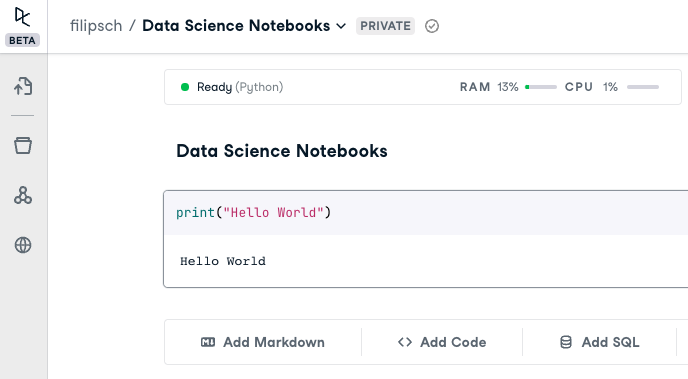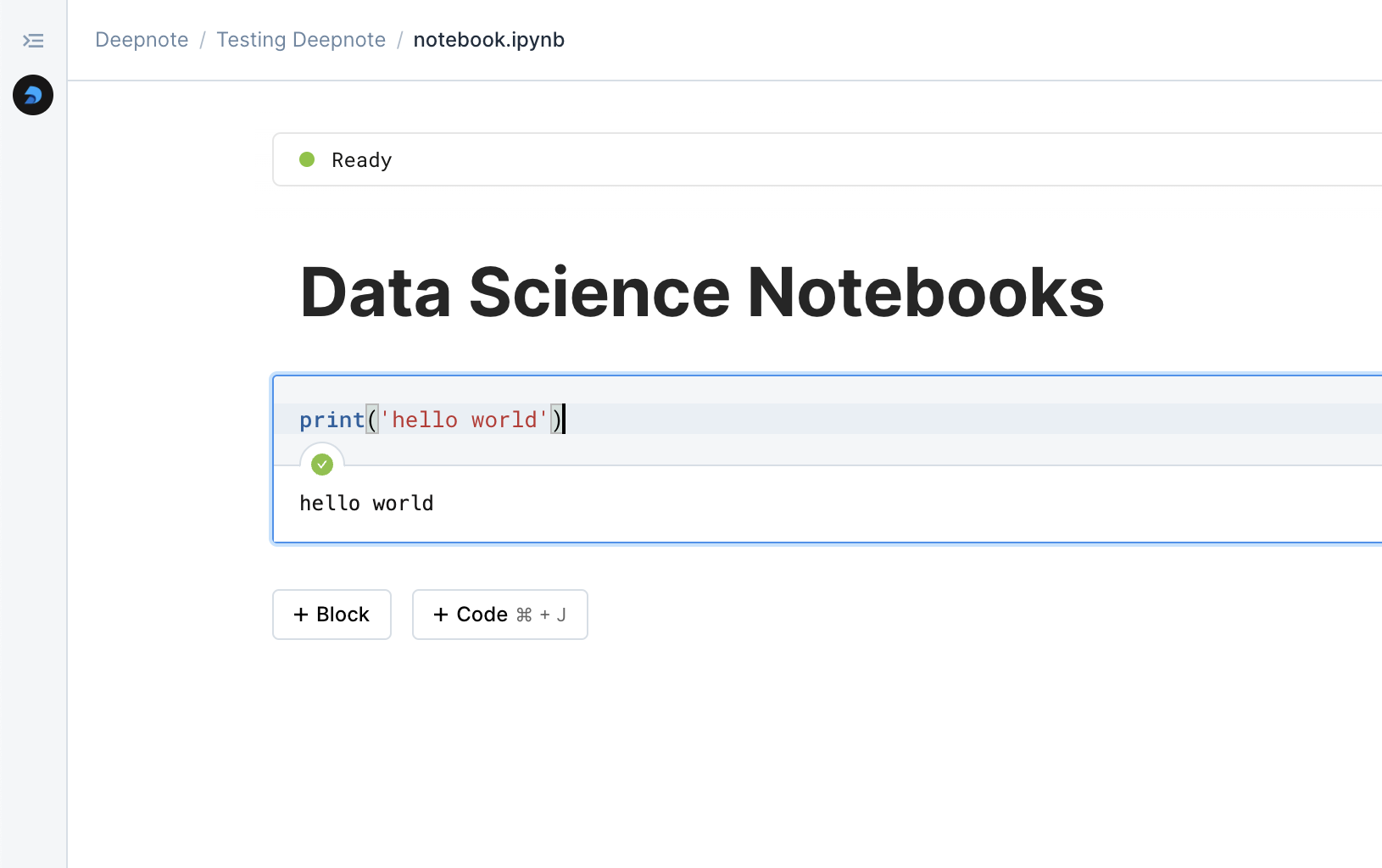

DataCamp Workspace

Comparing two data science notebooks.






In today's data-driven world, choosing the right platform for data science and analytics can significantly impact your productivity and success. DataCamp Workspace and Deepnote represent two distinct approaches to cloud-based data science environments, each with its own strengths and target audience. Let's dive deep into what makes each platform unique and help you make an informed decision.
DataCamp Workspace emerges from the educational technology sphere, building upon DataCamp's reputation for data science learning. It provides an intuitive, browser-based IDE that seamlessly integrates with DataCamp's vast learning resources. The platform is designed to bridge the gap between learning and practical application, making it particularly appealing for those transitioning from education to real-world data science projects.
Deepnote, on the other hand, positions itself as a professional-grade collaborative platform for data teams. It offers a comprehensive environment that goes beyond basic notebook functionality, incorporating sophisticated features for team collaboration, data visualization, and project management. The platform has gained significant traction among professional data teams and enterprises looking for a robust, scalable solution.
Deepnote shines in its collaborative capabilities, offering real-time multi-user editing that feels seamless and intuitive. Teams can work simultaneously on projects, share insights, and maintain version control effortlessly. The platform's project templates and workspace organization tools make it easy to standardize workflows across teams.
DataCamp Workspace, while supporting basic collaboration, focuses more on individual learning and development. Its integration with DataCamp's learning resources means users can easily access tutorials, datasets, and educational content while working on their projects.
Deepnote takes a comprehensive approach to data integration, offering extensive connectivity options to external data sources, databases, and cloud services. Its built-in database exploration tools and visual query builders make it easier for teams to work with complex data infrastructures.
DataCamp Workspace provides a more streamlined approach, offering access to curated datasets and simplified data import options. This approach aligns well with its educational focus, making it easier for learners to start working with data without getting overwhelmed by complex integration requirements.
Both platforms have embraced AI-assisted development, but their implementations differ significantly. Deepnote's AI capabilities extend beyond basic code completion, offering sophisticated visualization assistance and context-aware suggestions that can significantly accelerate workflow development.
DataCamp Workspace's AI features are more focused on supporting learning and development, with helpers that guide users through common data science tasks and provide educational context for different approaches.
DataCamp Workspace: The learning-focused platform
Deepnote: The professional team solution
DataCamp Workspace's pricing is integrated into DataCamp's subscription model, making it an excellent value for those already using DataCamp for learning. This approach makes it particularly accessible for students and educational institutions.
Deepnote offers a more flexible pricing structure, including a generous free tier and customizable enterprise plans. This makes it accessible to both individual professionals and large organizations while ensuring scalability as teams grow.
The decision between DataCamp Workspace and Deepnote ultimately depends on your specific needs and context. If you're primarily focused on learning and personal development, with occasional collaboration needs, DataCamp Workspace provides an excellent environment with integrated educational resources.
However, if you're working in a professional team environment, requiring robust collaboration features, extensive data integration options, and advanced visualization capabilities, Deepnote offers a more comprehensive solution that can scale with your needs.
Both platforms serve valuable but distinct purposes in the data science ecosystem. DataCamp Workspace excels as a learning-oriented platform with strong educational integration, while Deepnote stands out as a professional-grade collaborative environment for data teams. Your choice should align with your primary use case, team size, and required level of collaboration and integration features.
Consider starting with DataCamp Workspace if you're in the learning phase or transitioning into data science, and look to Deepnote when you need more advanced team collaboration features and professional-grade tools for complex data projects.